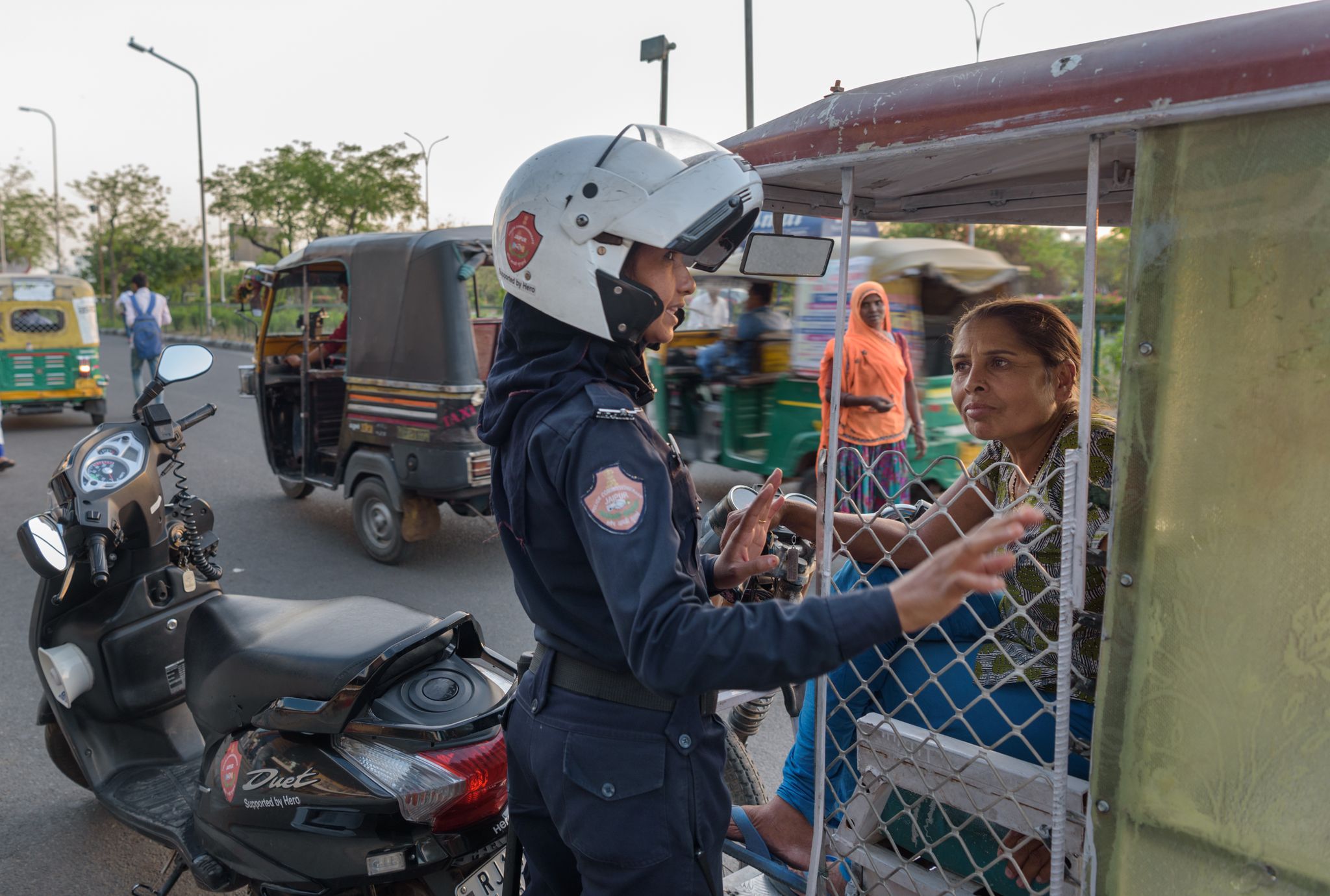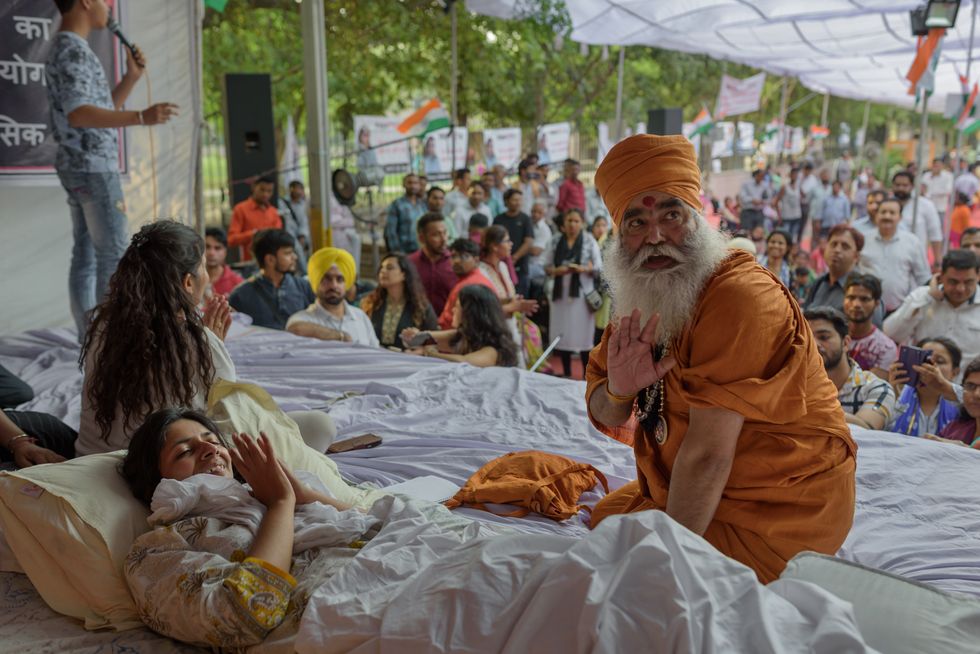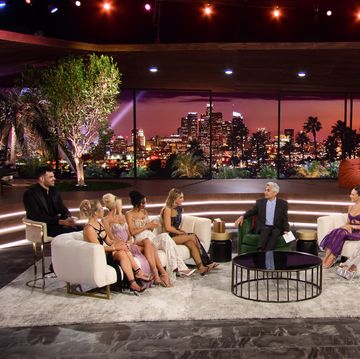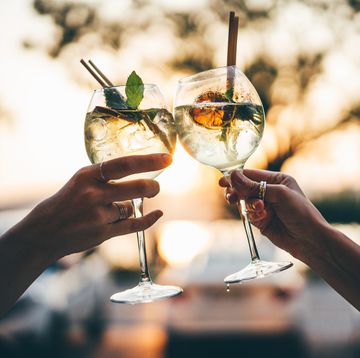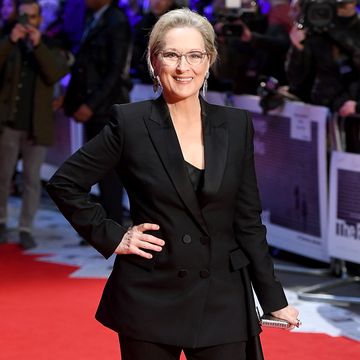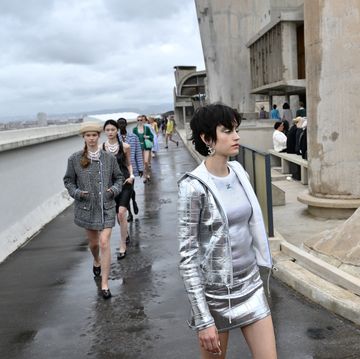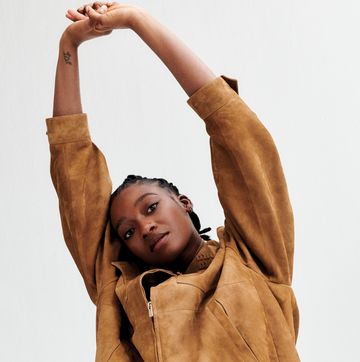Sitting on the back of police motorcycles, we held onto the thin-framed women steering in front of us as we zoomed down Jaipur's bustling streets. It was a bright, hot day in April, and we were filming for our ELLE feature story on Indian police women fighting sexual harassment and assault, produced in collaboration with the Fuller Project.
Women drive motorbikes in many cities and towns of India. But to sit behind a woman dressed in police uniform while she patrolled the streets—an uncommon sight in India—felt empowering. Onlookers gazed at the women police patrol with respect and curiosity. No one, it seemed, wanted to mess with them.
Amid a rising wave of violence against women in India, women constitute just
over 7 percent of the police force . Girls are traditionally conditioned to work in desk jobs. But not these women.
Crimes against women in India have increased at least 34 percent in the past four years, according to data from the 2017 National Crime Records Bureau. The statistics only tell us part of the story—hundreds of cases go unreported.
Our reporting coincided with upheaval over a series of violent attacks against women, including one rape-murder case in which a group of men—including police officers—gang raped and killed an 8-year-old girl.
Several months later, in Uttar Pradesh in northern India, a girl tried to commit suicide after inaction over an alleged rape by a politician. Her father was later rounded up and died in police custody.
In Delhi, we saw large protests in response to the violence, with men and women demanding justice. “Make Women Safe,” they chanted as a chorus.
Swati Maliwal, the chairperson of the Delhi Commission for Women, was on an indefinite hunger strike to demand stringent laws and the death penalty for rapists. We interviewed her as she lay on a makeshift wooden stage. Every time someone would walk by, the entire stage would move abruptly. It felt like an earthquake.
The harassment that pervaded our story also struck our team. A man approached us from behind, in the guise of offering balloons, but he refused repeated requests to back off. The female squad snapped into action.
You harass women, you will face consequences, they showed. When we saw how seriously the women treated what had happened, it made us rethink our own behavior—as women, we normalise so much.
But our story is not only about the triumph of women police. Even Jaipur’s Police Commissioner, a calm, impeccably dressed man who got straight to the point, admitted that his police force hasn’t employed enough women. That attitude is important: we need men on board. Women can’t fight alone.
On the last day of reporting—a quiet Monday—we visited an all-women police station. The officer in charge, 40-year-old Shefali Sankhla wearing a mustard-coloured beret, addressed us as 'sir.' It was a habit, she said.
Her response showed how men still dominate the police force. We hope our work will motivate girls and women to become police. India needs them.

